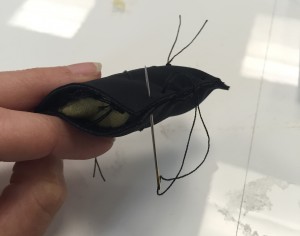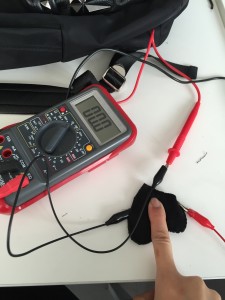So this past week, we worked on touch sensors made out of textiles. It was interesting to learn that you can create electronics from seemingly simple fabric, but the possibilities are endless with conductive fabric.
So for this project, I layered my fabric and sponges and sewed it all together (except for the main resistive piece in the middle because I was unsure where exactly to sew it, so I left it so I could move in the right position).
The first layer is nonconductive outside of two pieces of lycra, two pieces of foam, and then two pieces of (4 altogether) conductive silver fabric on top of the sponge, with the resistive piece of fabric right in the middle of it all, touching both sides of the conductive fabric.
Here’s what it looked like (I know my sewing skills could use some work, but it is all attached as I wanted):

So, that’s the touch sensor before I sewed it-I wanted to make sure it worked, so I did not sew it right away. So, when I checked it, it worked! So then I sewed all the pieces together.





























